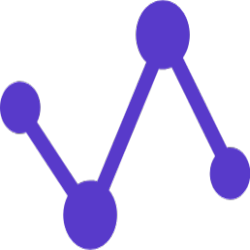
Follow
This article introduces how to use common Pandas operators with MaxFrame.

This article introduces how the new offline near real-time integrated architecture based on MaxCompute supports comprehensive business scenarios.

This article introduces how to conduct permission statistics by using metadata-related permission views.

This article mainly introduces MaxCompute's tenant-level Information Schema and focuses on job accounting through the TASKS_HISTORY view of metadata.

This article mainly introduces MaxCompute's tenant-level Information Schema and focuses on statistical analysis through the TUNNELS_HISTORY view of metadata.

This article mainly introduces MaxCompute's tenant-level Information Schema and focuses on using the CATALOGS view of metadata for project-related statistics.

This article introduces the support of Global Z-Order in MaxCompute.

This article introduces the new syntax supported by MaxCompute - PIVOT/UNPIVOT.

Part 11 of the "Unleash the Power of MaxCompute" series introduces the features and use of QUALIFY Clause.

Part 10 of the "Unleash the Power of MaxCompute" series introduces the script mode and parameterized views of MaxCompute.

Part 9 of the "Unleash the Power of MaxCompute" series introduces the script mode and parameterized views of MaxCompute.

Part 9 of the "Unleash the Power of MaxCompute" series introduces the improvements made by MaxCompute to address the limitations of its self-defined functions.

Part 7 of the "Unleash the Power of MaxCompute" series introduces MaxCompute's support for GROUPING SETS.

Part 6 of the "Unleash the Power of MaxCompute" series describes a new feature called User Defined Type (UDT).

Part 5 of the "Unleash the Power of MaxCompute" series introduces the support of MaxCompute for other scripting languages - SELECT TRANSFORM.

Part 4 of the "Unleash the Power of MaxCompute" series describes the improvements of MaxCompute in the SQL DML.

Part 3 of the “Unleash the Power of MaxCompute” series describes the complex type functions of MaxCompute.

Part 2 of the “Unleash the Power of MaxCompute” series describes the basic data types and built-in functions of MaxCompute.

Part 1 of the “Unleash the Power of MaxCompute” series describes the improvements of MaxCompute in usability.

This article introduces the materialized views of MaxCompute, including its features and use cases.


Santhakumar Munuswamy Commented on Distributed Pandas Processing with MaxCompute MaxFrame

Dikky Ryan Pratama Commented on ProjectName Automatically Completed under ODPS SQL Development and Production Environment of DataWorks

Raja_KT Commented on MaxCompute Tunnel Offline Batch Data Channel FAQs